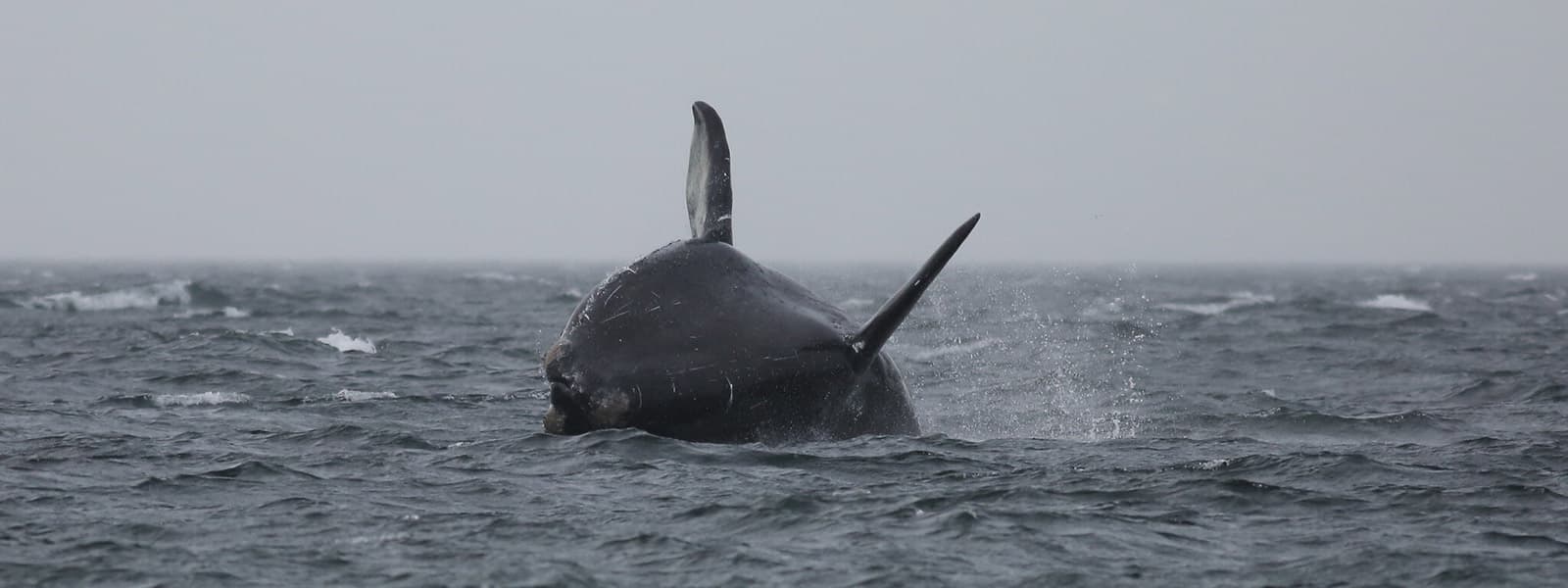- Home
- Explore the Blue
- Saving the Right Whales
Saving the Right Whales: Stormy Mayo
Charles "Stormy" Mayo is one of the founders of the Center for Coastal Studies, and was instrumental in the designation of Stellwagen Bank National Marine Sanctuary. Together with Dave Mattila and others at the Center, Mayo developed the techniques used by NOAA and other organizations to disentangle whales. This is his Story from the Blue.
My family came to Boston in 1637 and then to Cape Cod. They were mostly mackerel fishermen all the way until my father, who was a tuna fisherman. In my family's early days they would carry harpoons on all their mackerel boats and if they had a chance at a swordfish or a whale, they'd take a shot. Most of the time they weren't successful in taking whales but once in a while they would be and it was a whole year's worth of living made in one throw.
For whalers, right whales were the "right" whale to catch. The animal is very robust, slow swimming, and easy to get near, especially when they're feeding, as is common in the Stellwagen Bank area. So right whales were relatively easy to harpoon, though usually very difficult to subdue, and they floated at the surface when killed. They have huge racks of baleen and plenty of oil, which were worth a lot.
Today, I think it's reasonable to say that there may be around 400 North Atlantic right whales. With that low population size and it being in a fairly steep decline, the situation right now is grim. So the future of the right whale in the North Atlantic is very much in doubt – we don't know for sure where the story is going, but we do know that in 2017 and 2018 we saw more than 20 mortalities and only five births. So the arithmetic is bad. We know now, although we didn't years ago, that entanglement in fishing gear is a big issue. For right whales it, along with low calving, may be the greatest threat to the future of the species.
The first real organized disentanglement effort was one that my colleague Dave Mattila and I, along with a group of volunteers, undertook on Thanksgiving Day, 1984. We were confronted by a whale we knew, an animal that had spent a lot of its life on Stellwagen, a young whale that I named "Ibis" and whose mother, "Pegasus," I knew well. So in a sense Ibis was a friend who was lethally entangled.

We were kind of scratching our heads about how to free her. My father was the captain of our research vessel and he said to me, "keg her." He was one of the last people to take a whale in Provincetown, and he had used beer kegs to act as floats. Whalers have historically used kegs to drag and tire whales and slow them down. We didn't have kegs, but we had big orange floats. Dave came up with the idea of using our boat's anchor as a grapple to throw into the trailing gear. The whale dragged the floats, but she was very weak – she'd been tangled and tortured for probably a whole summer. After several hours Ibis had tired and she stopped, motionless, on the surface and we were able to free her.
We now have a full-on disentanglement program, and Dave Mattila is now working with the International Whaling Commission, bringing the disentanglement methods to fishermen and rescuers around the world.
In the early days of the Center for Coastal Studies, we realized that Stellwagen was an area of particular richness for marine mammals.”
In the early days of the Center for Coastal Studies, we had dedicated folks collecting data from whale watch boats. We realized that Stellwagen Bank was an area of particular richness for marine mammals. Working together with a group in Washington, I used our data, most collected from whale watching boats, to substantiate the value of the place and to submit a nomination to make Stellwagen a national marine sanctuary. The bank was eventually designated and of course named Stellwagen Bank National Marine Sanctuary.
The sanctuary program fosters an important vision of the bank's complex and interdependent elements, including the human and animal "users" that depend on its rich complexity. To assure the future productivity of the Stellwagen ecosystem, the sanctuary's vision identifies the need for the protection of all of its components in order to make the system work.


